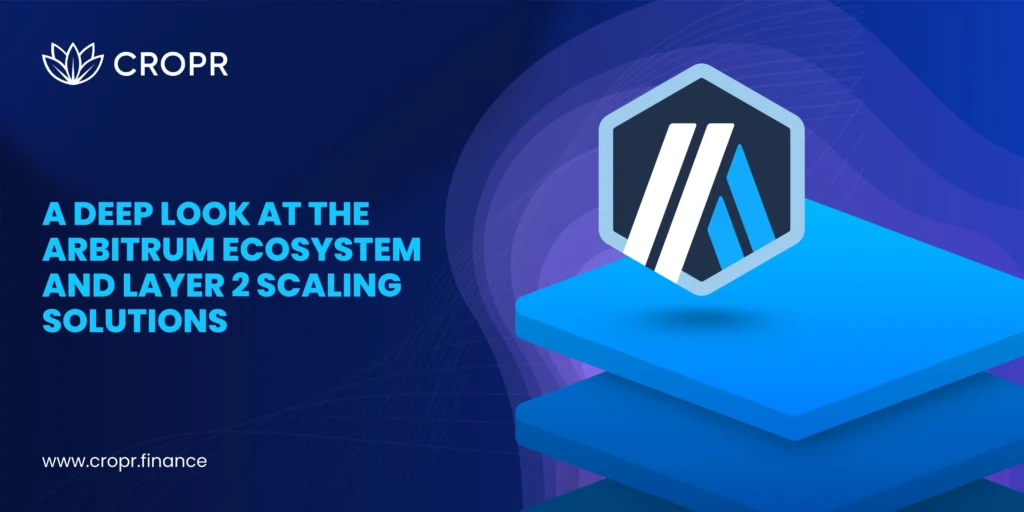The growing demand for decentralized finance (DeFi) and blockchain applications has exposed critical challenges related to network scalability and transaction costs. Ethereum, as the leading smart contract platform, experiences congestion during peak usage periods, resulting in higher fees and slower transaction processing. Addressing these limitations has become essential for sustaining the growth and usability of decentralized applications.
Arbitrum blockchain emerges as a prominent Layer 2 scaling solution designed to enhance Ethereum’s capacity. By operating on top of Ethereum, Arbitrum seeks to reduce network congestion while preserving the security and decentralization that define the Ethereum mainnet. This approach aligns with broader blockchain scalability solutions aimed at maintaining performance without compromising foundational trust.
What is Arbitrum Layer 2?
Layer 2 scaling solutions refer to secondary frameworks built atop base blockchains to increase throughput and reduce costs. Arbitrum is a leading implementation in this category. It processes transactions off-chain and settles results on Ethereum’s mainnet, effectively alleviating the load on the base layer.
Through this method, Arbitrum maintains Ethereum’s security guarantees by anchoring state commitments on-chain while executing most operations in a more resource-efficient environment. This model enables faster transaction finality and significantly lower gas fees.
The Role of Optimistic Rollups
Arbitrum leverages optimistic rollups as its core technology. Optimistic rollups batch multiple transactions together, submitting a single aggregated proof to the Ethereum chain. The system operates under the assumption that transactions are valid unless proven otherwise, allowing it to process large volumes with minimal on-chain data.
To ensure correctness, Arbitrum implements a dispute resolution mechanism that permits challenges to fraudulent transactions. This balance between optimistic processing and verifiable security ensures the integrity of state transitions while providing scalability improvements.
The Expanding Arbitrum Ecosystem
The Arbitrum ecosystem has rapidly gained traction, with numerous DeFi protocols deploying on the network. Well-known platforms such as Uniswap, Aave, and SushiSwap have integrated Arbitrum, offering users the ability to transact with reduced fees and improved speeds.
This expansion reflects a broader trend within multi-chain blockchain platforms, where users and projects distribute activity across various chains and Layer 2 networks. Arbitrum’s compatibility with existing Ethereum tooling and smart contracts facilitates seamless migration and interoperability within the ecosystem.
Arbitrum Within a Multi-Chain Strategy
Incorporating Arbitrum into a multi-chain strategy provides both flexibility and efficiency. Users can benefit from Ethereum’s security foundation while leveraging Layer 2 solutions for cost-effective and rapid transactions.
CROPR stands out as one of the most comprehensive multi-chain portfolio management platforms. It supports major networks such as Ethereum, Polygon, and Layer 2 solutions, including Arbitrum, giving users unified control and clear insights across diverse crypto assets. This seamless integration allows investors to track, analyze, and manage their holdings in one place without switching between multiple platforms.
The multi-chain approach addresses limitations inherent to single-chain environments and enables users to optimize their interaction with decentralized applications. As blockchain ecosystems mature, the ability to manage assets and operations across chains will be increasingly critical.
Challenges and Future Developments
While Arbitrum offers tangible advantages, it is important to consider ongoing challenges. Withdrawal delays from Layer 2 back to Ethereum remain a point of attention. Additionally, ensuring sufficient liquidity across networks and maintaining user experience consistency are areas under active development.
The Arbitrum team is focused on improving these aspects by refining protocols and expanding compatibility with decentralized applications. These efforts contribute to enhancing the practical adoption and long-term sustainability of the network.
Conclusion
The Arbitrum blockchain ecosystem plays a vital role in addressing Ethereum’s scalability challenges by offering an efficient Layer 2 scaling solution. As demand for decentralized finance and blockchain applications grows, solutions like Arbitrum help maintain network performance while preserving security and decentralization. This makes participation in the Arbitrum ecosystem increasingly attractive for users and developers alike.
In line with the rise of multi-chain blockchain platforms and evolving multi-chain strategies, effective portfolio management becomes essential. At CROPR, we provide one of the most reliable crypto portfolio management solution, designed to give users a clear, consolidated view of their assets across Ethereum, Polygon, Arbitrum blockchain, and other Layer 2 scaling solutions. Our platform supports seamless tracking of wallets and protocols, simplifying the complexities of interacting with the broader blockchain scalability solutions landscape.
We are continuously advancing CROPR by adding more chains, integrating additional protocols, and enhancing features to better serve our users. Our development is community-driven, and we welcome feedback to help shape the future of multi-chain crypto portfolio management.
Experience how CROPR can streamline your DeFi journey on Arbitrum and beyond—try out our demo today.
Join Beta

